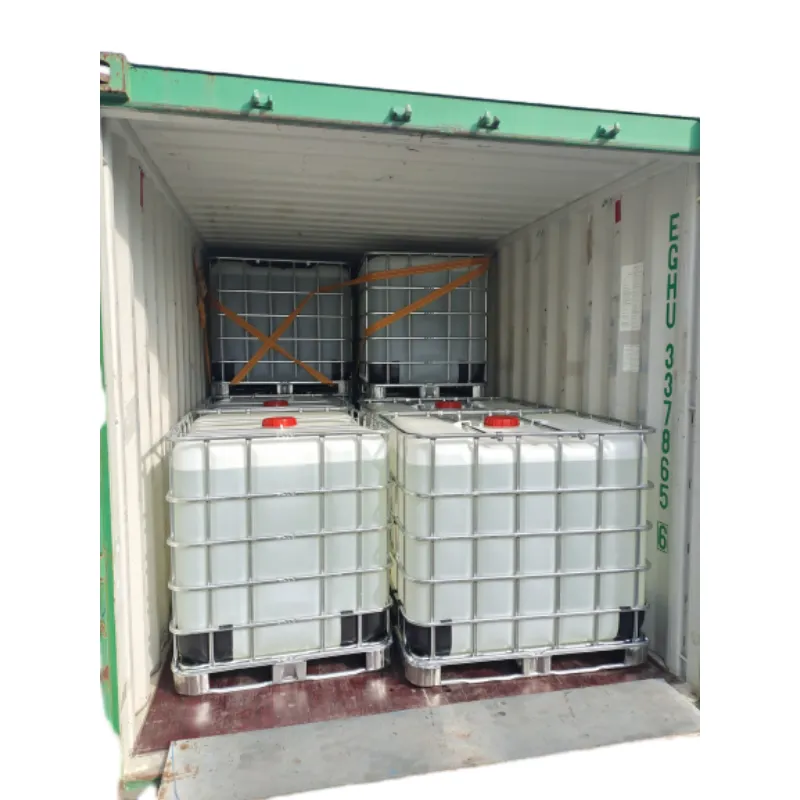
types of organic solvents
Types of Organic Solvents An Overview
Organic solvents play a crucial role in various industries, including pharmaceuticals, paints, coatings, and chemical processes. These solvents are typically carbon-based compounds that can dissolve other substances without changing their chemical composition. Understanding the different types of organic solvents and their properties is essential for selecting the right solvent for specific applications.
1. Hydrocarbon Solvents
Hydrocarbon solvents are organic compounds primarily composed of hydrogen and carbon. They can be classified into aliphatic (straight-chain or branched) or aromatic (ring-structured) solvents. Common examples include hexane, toluene, and benzene. Aliphatic hydrocarbons are often used in cleaning, degreasing, and as extraction solvents due to their non-polar nature. Aromatic solvents, such as xylene and toluene, are known for their ability to dissolve a wide range of organic compounds, making them popular in the paint and coatings industry. However, many aromatic solvents are toxic and potentially carcinogenic, necessitating careful handling and use.
2. Alcohols
Alcohols are a versatile category of organic solvents characterized by the presence of one or more hydroxyl (-OH) groups. Common examples include methanol, ethanol, isopropanol, and butanol. Alcohols are polar solvents, meaning they can dissolve both polar and some non-polar compounds. They are commonly used in the production of pharmaceuticals, personal care products, and as cleaning agents. One significant advantage of using alcohols is their relatively low toxicity compared to other organic solvents. Additionally, alcohols can be readily biodegradable, making them an environmentally friendly choice for many applications.
3. Esters
types of organic solvents

Esters are formed from the reaction of acids and alcohols and are known for their pleasant odors. Common ester solvents include ethyl acetate, butyl acetate, and methyl acetate. These solvents are widely used in the paint and coatings industry, as well as in adhesives and cosmetics. Esters exhibit moderate polarity, which allows them to dissolve a range of organic materials. Their low boiling points and high volatility make them excellent choices for applications that require rapid drying times.
4. Ketones
Ketones are characterized by a carbonyl group (C=O) flanked by carbon atoms. Acetone, methyl ethyl ketone (MEK), and cyclohexanone are some of the most common ketone solvents. Ketones are polar and can effectively dissolve a wide variety of substances, including plastics and resins. Due to their strong solvent properties and ability to mix with water, ketones are often used in commercial degreasing and cleaning products. However, like aromatic hydrocarbons, some ketones can pose health risks if inhaled or ingested.
5. Ethers
Ethers consist of an oxygen atom connected to two carbon groups and are known for their low reactivity. Common examples include diethyl ether and tetrahydrofuran (THF). Ethers are often used as solvents for organic synthesis and in laboratories due to their ability to dissolve a wide range of organic compounds, including non-polar substances. However, ethers can be highly flammable and should be used with caution.
Conclusion
The choice of organic solvent depends on the specific requirements of an application, including polarity, volatility, toxicity, and environmental impact. Understanding the various types of organic solvents—hydrocarbons, alcohols, esters, ketones, and ethers—enables industries to select the most appropriate solvents for their processes. As the demand for greener and safer alternatives continues to rise, the exploration of biodegradable and less toxic solvents will likely play a significant role in the future of chemical manufacturing and environmental sustainability.
-
Pure Sodium Dichloroisocyanurate Dihydrate | Powerful DisinfectantNewsAug.29,2025
-
Industrial Chemicals: Quality & Purity for Every IndustryNewsAug.28,2025
-
Nitrile Rubber Honoring Strict Production StandardsNewsAug.22,2025
-
Aspartame Ingredients Honoring Food Safety ValuesNewsAug.22,2025
-
Fertilizer for Balanced Plant NutritionNewsAug.22,2025
-
Cyanide Gold Processing with High Purity AdditivesNewsAug.22,2025
-
Formic Acid in Textile Dyeing ApplicationsNewsAug.22,2025
Hebei Tenger Chemical Technology Co., Ltd. focuses on the chemical industry and is committed to the export service of chemical raw materials.
-

view more DiethanolisopropanolamineIn the ever-growing field of chemical solutions, diethanolisopropanolamine (DEIPA) stands out as a versatile and important compound. Due to its unique chemical structure and properties, DEIPA is of interest to various industries including construction, personal care, and agriculture. -

view more TriisopropanolamineTriisopropanolamine (TIPA) alkanol amine substance, is a kind of alcohol amine compound with amino and alcohol hydroxyl, and because of its molecules contains both amino and hydroxyl. -

view more Tetramethyl Thiuram DisulfideTetramethyl thiuram disulfide, also known as TMTD, is a white to light-yellow powder with a distinct sulfur-like odor. It is soluble in organic solvents such as benzene, acetone, and ethyl acetate, making it highly versatile for use in different formulations. TMTD is known for its excellent vulcanization acceleration properties, which makes it a key ingredient in the production of rubber products. Additionally, it acts as an effective fungicide and bactericide, making it valuable in agricultural applications. Its high purity and stability ensure consistent performance, making it a preferred choice for manufacturers across various industries.





